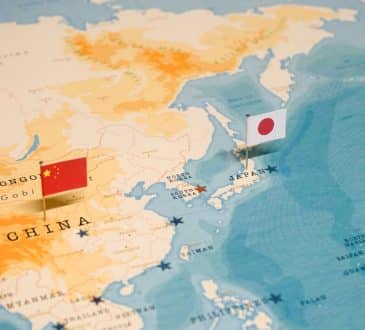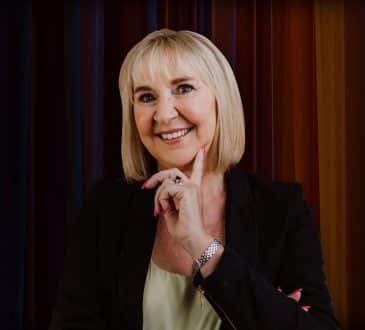Executive Bridge Coaching: A Game Changer for Leadership Transitions

Leadership transitions can be a critical inflection point for organizations, yet many companies focus on succession planning while neglecting the complexities of the handoff itself. Executive bridge coaching ensures a smooth, strategic transition by supporting both outgoing and incoming executives, preserving institutional knowledge, and minimizing disruption. This structured approach accelerates onboarding, strengthens leadership alignment, and helps departing leaders navigate their next chapter with purpose. By investing in bridge coaching, companies don’t just manage change—they build long-term resilience and stability.
- Executive bridge coaching facilitates smooth leadership transitions by supporting both departing and incoming executives.
- Preserves institutional knowledge and ensures a structured handoff to minimize business disruption.
- Accelerates onboarding for new leaders, which builds confidence, clarity, and team alignment.
- Strengthens long-term success by reducing transition-related risks and enhancing leadership continuity.
Leadership transitions are inevitable at the executive level. Whether stepping into a C-suite role or exiting a long-held corporate position, these shifts can be equal parts exhilarating and daunting. The challenge isn’t just in finding the right successor—it’s in ensuring a seamless transition that protects institutional knowledge, minimizes disruption, and positions both incoming and outgoing leaders for long-term success.
Too often, companies dedicate extensive time to succession planning but underestimate the complexity of the actual handoff. Executive bridge coaching closes this gap, providing structured support that transforms leadership transitions from a potential period of instability into a strategic advantage.
What Is Executive Bridge Coaching?
Executive bridge coaching is a structured approach that facilitates smooth leadership transitions by working with both the departing executive and their successor. Unlike traditional onboarding or exit coaching, bridge coaching is designed to create continuity at every level:
- For the outgoing executive, it ensures a purposeful exit, allowing them to leave behind a strong legacy while preparing for their next chapter—whether that means board service, consulting, retirement, or another leadership opportunity.
- For the incoming leader, it accelerates the learning curve, providing clarity, confidence, and strategic insight into the role and organizational culture.
- For the organization, it preserves stability, mitigating the common chaos and uncertainty that often accompany executive transitions.
While HR and direct managers play critical roles in onboarding, the reality is that they often lack the bandwidth to execute a meaningful handoff. Executive bridge coaching fills this gap by facilitating structured knowledge transfer, leadership alignment, and cultural integration—elements that are crucial for a successful transition but are frequently overlooked.
Planned vs. Unplanned Exits
Planned leadership transitions allow for more strategic preparation, with the outgoing leader typically willing to engage in a structured handover. However, unplanned departures introduce complexity that can disrupt business operations.
When an executive resigns unexpectedly, they may still be cooperative, but their departure timeline is often compressed, forcing the organization to accelerate the transition process. This urgency may not align with the availability of key stakeholders or the timeline for hiring a replacement, leaving the departing executive’s manager in a difficult position, shouldering additional responsibilities while scrambling to transfer critical knowledge.
In cases where an executive is let go, the situation becomes even more challenging. The mental and emotional state of the outgoing leader, their willingness to participate in a transition, and the sudden nature of their exit can all impact the process. Some organizations offer outplacement services as an incentive to encourage a smoother handoff, but what’s often missing is a coordinated effort between onboarding and outplacement. Executive bridge coaching bridges this gap, ensuring that even in difficult transitions, knowledge is retained and the organization remains stable.
The Benefits of Executive Bridge Coaching
Executive transitions can be a critical turning point for an organization, either driving growth or creating instability. Bridge coaching ensures that leadership changes strengthen the company rather than disrupt it by focusing on five key areas:
- Protecting Institutional Knowledge
When a senior leader departs, their insights, relationships, and decision-making rationale don’t have to disappear with them. Executive bridge coaching facilitates a structured knowledge transfer, ensuring that critical information isn’t lost in the transition. Instead of relying on informal conversations or rushed documentation, this process provides a clear framework for preserving institutional knowledge. The incoming executive gains access to key historical decisions, stakeholder relationships, and unwritten cultural dynamics that can’t be found in company handbooks. As a result, they can make informed decisions faster, reducing the risk of missteps in their early days. - Reducing Leadership Disruption
Leadership transitions can create uncertainty, leading to dips in morale, productivity, and overall company performance. Bridge coaching mitigates this disruption by providing a clear roadmap for both incoming and outgoing executives. The departing leader exits with intention, ensuring they don’t linger too long or depart too abruptly. The incoming executive benefits from a structured transition that helps them integrate quickly and effectively, avoiding the common pitfalls of the first 90 days. Meanwhile, teams experience continuity, reducing resistance to change and maintaining stability across the organization. Instead of a leadership vacuum, the transition becomes a well-executed relay handoff. - Providing Clarity and Confidence for the Incoming Executive
Even the most qualified executives face a steep learning curve when stepping into a new leadership role. Without proper transition support, they risk misinterpreting company culture, struggling to establish trust with their teams, or overlooking critical organizational dynamics. Executive bridge coaching provides a strategic onboarding process that equips new leaders with the insights and real-time support they need to navigate their first months successfully. With a clear understanding of expectations, company history, and key relationships, they can make informed decisions from day one rather than spending months trying to piece together fragmented information. - Helping the Outgoing Leader Navigate Their Next Chapter
For departing executives, stepping away from a leadership role isn’t just a career move—it’s a major life transition. Many struggle with redefining their professional identity, finding new opportunities, or adjusting to a less structured work life. Bridge coaching offers tailored support to help outgoing leaders explore their next steps, whether that includes board positions, consulting roles, or other meaningful professional pursuits. Instead of an abrupt departure, they transition with clarity and purpose, leaving the organization as a brand advocate while feeling fully prepared for what comes next. - Strengthening the Organization’s Long-Term Success
A well-managed leadership transition doesn’t just benefit the individuals involved—it strengthens the entire organization. Companies that invest in executive bridge coaching see stronger leadership alignment, as new executives enter their roles with a clear strategic direction. Employee engagement and retention also improve, as teams feel more secure in a transition that is handled with care and precision. Over time, this approach fosters a culture of succession planning, ensuring that future leadership changes are managed proactively rather than reactively. Organizations that prioritize structured transitions aren’t just managing change—they’re building long-term resilience.
Why Executive Bridge Coaching Is a Must-Have, Not a Luxury
Too many companies make the mistake of focusing solely on hiring the right leader while neglecting the transition process itself. This oversight leads to high failure rates for new executives, cultural misalignment, and a chaotic leadership change that disrupts business continuity.
Bridge coaching ensures a seamless, intentional transition by providing structured guidance at every stage. It aligns the outgoing and incoming leaders, safeguards institutional knowledge, and preserves organizational stability—all of which are critical for long-term success. For executives preparing to step into or out of a leadership role, and for organizations committed to strengthening their succession planning, bridge coaching is not just an advantage. It’s essential.
Leadership transitions don’t have to be disruptive. With the right coaching support, they can serve as a strategic opportunity to strengthen leadership, align organizational goals, and drive long-term success. Executive bridge coaching transforms what could be a period of uncertainty into a powerful moment of growth—for the leader leaving, the leader arriving, and the company moving forward.
Written by Andrea Maizes.
Have you read?
Countries with the most gold reserves.
World’s Best Public Relations Agencies (Top PR Firms).
Countries with the highest human freedom.
World’s Safest & Most Dangerous Countries For Travelers.
Longest and Shortest Life Expectancies in the World.
Bring the best of the CEOWORLD magazine's global journalism to audiences in the United States and around the world. - Add CEOWORLD magazine to your Google News feed.
Follow CEOWORLD magazine headlines on: Google News, LinkedIn, Twitter, and Facebook.
Copyright 2025 The CEOWORLD magazine. All rights reserved. This material (and any extract from it) must not be copied, redistributed or placed on any website, without CEOWORLD magazine' prior written consent. For media queries, please contact: info@ceoworld.biz











